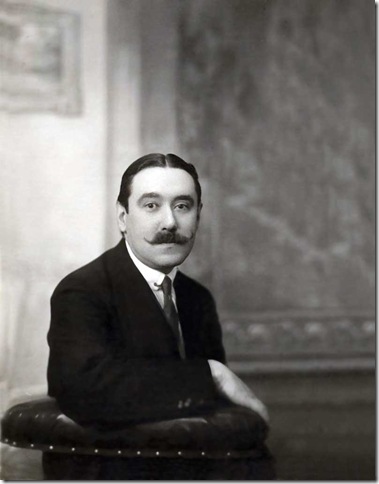The 10th string quartet of Beethoven, depending on which scholarly camp you favor, is either a genial mid-career throwback to the peak of the Haydn classical style or the earliest example of the innovatory, astonishing manner of the late-period quartets.
Either way, it’s a remarkable piece of music from a remarkable year (1809), and it was the high point Friday night of the second series of concerts in the current Palm Beach Chamber Music Festival.
Known familiarly by its Harp sobriquet, the quartet (in E-flat, Op. 74), is a brilliantly structured piece that in its outer movements employs a free-fantasy approach that emphasizes drama and sonic effect, and in its inner movements trades a placid slow movement for a searing exercise in sustained, intense emotion, and swaps a minuet for a ferocious minor-major stomp-and-fugue that echoes the Fifth Symphony and presages the Ninth.
And it was well-served by its four players: Violinists Mei-Mei Luo and Dina Kostic, violist Rene Reder, and cellist Susan Bergeron. Throughout the work the four women played with deep commitment and engagement, and displayed fine technique and musicianship. Standout moments came with Bergeron’s first volley in the battle of the third-movement fugue, which she played with great speed while giving each note its full value, and with the second movement as a whole, which had an unbroken dramatic line that lost none of its focus even during the break in the middle.
The final theme and variations was somewhat shakier, with an underplayed viola variation and some initial fuzziness about each section before recovering in the two-against-three passage toward the end. The opening movement, too, had some moments of not-quite-togetherness, but the game changed for this foursome in the final moments of the opening, as Luo began her diminished-chord fiddling and the rest of the quartet sang out the central motifs with warmth and beauty. That’s where this performance jelled, and I think by Monday evening, with two more concerts under their belt, these musicians will be able to give this great work an exceptional reading.
The Beethoven was easily the best music on the program at Palm Beach Atlantic’s Persson Hall, which opened with another string quartet, the Oración del Torero, Op. 34, of Joaquín Turina. This is probably Turina’s best-known piece, and the string players – Kostic, Rebecca Didderich, Reder and cellist Christopher Glansdorp – performed it with panache and high style. Intonation, however, was problematic, with most of the unison octave passages not in tune, and that makes a difference in a piece as transparent, aromatic, and melody-oriented as this one. Glansdorp played beautifully, even when just buttressing the music with fat pizzicati, and the four musicians handled the whispered, atmospheric ending very nicely.
The Turina was followed by the sextet for piano and wind quintet of Francis Poulenc, one of the high points of French 20th-century chamber music writing. Pianist Lisa Leonard was joined by flutist Karen Dixon, oboist Sherie Aguirre, clarinetist Michael Forte, hornist Ellen Tomasiewicz and bassoonist Michael Ellert for this piece, which the festival is revisiting after scheduling it some 16 years ago.
This is a piece for expert players, and the six musicians had no real difficulty playing in good French style or understanding Poulenc’s kitschy aesthetic, nor were the technical challenges beyond their reach. Tomasiewicz missed a couple notes here and there, but this is a murderous horn part, and what sticks in the memory more is her fine playing of the soaring high passages, especially in the finale.
But overall, this was a much too aggressive performance, as if the volume had been cranked up to 11 and left there. There was a powerful crispness to the music, particularly on Leonard’s part, who played with great strength and clarity, but what was missing was a sense of proportion and variety. Poulenc is a composer of many shifting moods, and it would have been better had the impressive bignesses of each movement also offered real contrast, not only in the presentation of the different themes, but in basic dynamics, which would have helped the music regain its subtlety.
The other work on the program was a contemporary piece, the Arioso for trumpet and wind quintet of Jerzy Sapieyevski, a Polish-born American composer who has taught at American University for years, and who wrote the work in 1986 at the request of the International Trumpet Guild. Trumpeter Marc Reese, whose standup-comedian style pre-performance remarks were quite funny, was the soloist.
This is a generally miserable piece of music, I’m sorry to say, at the level for the most part of a bad movie score. The piece dates from a period of classical composition when composers were beginning to feel unafraid to write tunes again, and Sapieyevski has a good feel for a catchy melody. But these pop-flavored tunes are too obvious, and the composer compounds the sin by leaving the accompanying quintet playing cheesy block chord changes most of the time.
Reese plays quite well, and he tossed off the scale rocket at the end of the watery-disco main section with sparkle each time it occurred. But he really needs to have something much better to play, like the Saint-Saëns Septet he performed with the festival a few years back. That’s a piece worth reviving, and one hopes the festival musicians won’t be offering the Arioso the same courtesy in years to come.
The Palm Beach Chamber Music Festival repeats this program at 2 p.m. Sunday at the Crest Theatre, Delray Beach, and at 8 p.m. Monday at the Eissey Campus Theatre at Palm Beach State College in Palm Beach Gardens. Tickets are $22. Call 800-330-6874 or visit www.pbcmf.org.
